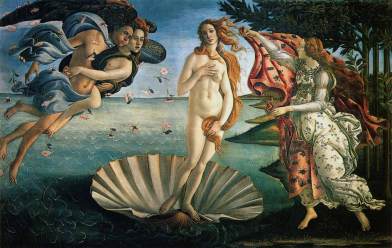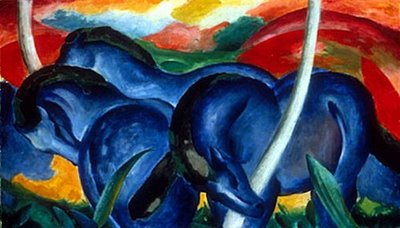ART has not always been what we think it is today. An object regarded as Art today may not have been perceived as such when it was first made, nor was the person who made it necessarily regarded as an artist. Both the notion of “art” and the idea of the “artist” are relatively modern terms. Many of the objects we identify as art today — Greek painted pottery, medieval manuscript illuminations, and so on — were made in times and places when people had no concept of “art” as we understand the term. These objects may have been appreciated in various ways and often admired, but not as “art” in the current sense.
Art lacks a satisfactory definition. It is easier to describe it as the way something is done — “the use of skill and imagination in the creation of aesthetic objects, environments, or experiences that can be shared with others” — rather than what it is.
Art is a testament of the moment and of the society in which the artist lives. It can be the positive or negative, but meaning is always present.——Juan Genoves
Art is a uniquely human activity that grows out of our inborn impulse to create. We create things that we have no utilitarian purpose.
“There are two kinds of art… art that is intrinsically artistic and timeless, and art that is meant to part a fool and his money. Sometimes we need a common cleaning lady to remind us of the difference.”
Art is a crystal of human civilization, it is also part of our life, without art our life will be so dull.
- Line, shape, form, value, color, space, texture, balance, unity, contrast, emphasis, pattern, movement and rhythm create art.
- Art includes the “major” arts of paintings, sculpture, and architecture……
Art history spans the entire history of humankind. Art is one of the parts in our lives, you can see it everywhere. During the Romantic period, art came to be seen as “a special faculty of the human mind to be classified with religion and science”. The history of art is the history in a visual form for aesthetical or communicative purposes, expressing ideas, emotions or. In general it is a worldview. You can express your emotion in paintings. Over time visual art has been classified in diverse ways, from the medieval distinction between liberal arts and mechanical arts, to the modern distinction between fine arts and applied arts. Expansion of the list of principal arts in the 20th century reached to nine: architecture, dance, sculpture, music, painting, poetry (described broadly as a form of literature with aesthetic purpose or function, which also includes the distinct genres of theatre and narrative), film, photography and comics……
| Time | Characteristics | Chief Artists and Major Works | |||||
|---|---|---|---|---|---|---|---|
|
Stone Age (30,000 b.c.–2500 b.c.) |
Cave paintings in the walls, fertility goddesses |
Lascaux Cave Painting, Woman of Willendorf, Stonehenge
|
|||||
|
Mesopotamian (3500 b.c.–539 b.c.)
|
Describe the events of wars which draw in stone | Standard of Ur, Gate of Ishtar, Stele of Hammurabi’s Code | |||||
|
Egyptian (3100 b.c.–30 b.c.) |
Pyramids and tomb painting | Imhotep, Step Pyramid, Great Pyramids, Bust of Nefertiti | |||||
|
Greek and Hellenistic (850 b.c.–31 b.c.) |
Statue, Greek idealism: balance, perfect proportions | Parthenon, Myron, Phidias, Polykleitos, Praxiteles | |||||
|
Roman (500 b.c.– a.d. 476) |
Roman realism | Augustus of Primaporta, Colosseum, Trajan’s Column, Pantheon | |||||
|
Indian, Chinese, and Japanese(653 b.c.–a.d. 1900) |
Colorful and traditional paintings | Gu Kaizhi, Li Cheng, Guo Xi, Hokusai, Hiroshige | |||||
|
Byzantine and Islamic (a.d. 476–a.d.1453) |
Paintings more about religions:Islamic architecture and amazing maze-like design Hagia Sophia, Andrei Rublev, Mosque of Córdoba, the Alhambra Justinian partly restores Western Roman Empire |
Hagia Sophia, Andrei Rublev, Mosque of Córdoba, the Alhambra | |||||
|
Middle Ages (500–1400) |
Celtic art, Carolingian Renaissance, Romanesque, Gothic | St. Sernin, Durham Cathedral, Notre Dame, Chartres, Cimabue, Duccio, Giotto | |||||
|
Early and High Renaissance (1400–1550) |
Rebirth of classical culture | Ghiberti’s Doors, Brunelleschi, Donatello, Botticelli, Leonardo, Michelangelo, Raphael | |||||
|
Venetian and Northern Renaissance (1430–1550) |
More focus on portrait | Bellini, Giorgione, Titian, Dürer, Bruegel, Bosch, Jan van Eyck, Rogier van der Weyden | |||||
|
Mannerism (1527–1580) |
Art that breaks the rules; More focus on naked | Tintoretto, El Greco, Pontormo, Bronzino, Cellini | |||||
|
Neoclassical (1750–1850) |
More on revolution | David, Ingres, Greuze, Canova | |||||
|
Romanticism (1780–1850)
|
About revolution | Caspar Friedrich, Gericault, Delacroix, Turner, Benjamin West | |||||
|
Realism (1848–1900) |
More real; en plein air rustic painting | Corot, Courbet, Daumier, Millet | |||||
|
Impressionism (1865–1885) |
Capturing fleeting effects of natural light | Monet, Manet, Renoir, Pissarro, Cassatt, Morisot, Degas | |||||
|
Post-Impressionism (1885–1910) |
Natural light | Van Gogh, Gauguin, Cézanne, Seurat | |||||
|
Fauvism and Expressionism (1900–1935) |
Harsh colors and flat surfaces | Matisse, Kirchner, Kandinsky, Marc | |||||
|
Cubism, Futurism, Supremativism, Constructivism, De Stijl (1905–1920)
|
Pre– and Post–World War 1 art experiments: new forms to express modern life | Picasso, Braque, Leger, Boccioni, Severini, Malevich | |||||
|
Dada and Surrealism (1917–1950) |
Ridiculous art; painting dreams and exploring the unconscious | Duchamp, Dalí, Ernst, Magritte, de Chirico, Kahlo | |||||
|
Abstract Expressionism (1940s–1950s) and Pop Art (1960s)
|
Post–World War II: pure abstraction and expression without form; popular art absorbs consumerism | Gorky, Pollock, de Kooning, Rothko, Warhol, Lichtenstein | |||||
To me art is anything that stimulates my audio and visual senses. It doesn’t matter whether it is a natural landscape, or a human creation. I enjoyed all forms of art. Reading a good book, watching a great film or TV program, an afternoon tour of the museum exhibits or camping in the wilderness are all considered nice treats for me. Art, in a broad sense, keeps me motivated to go on my otherwise boring daily routines. It is not just important to my life, it is an indispensable part of my life.
|
|
|





















